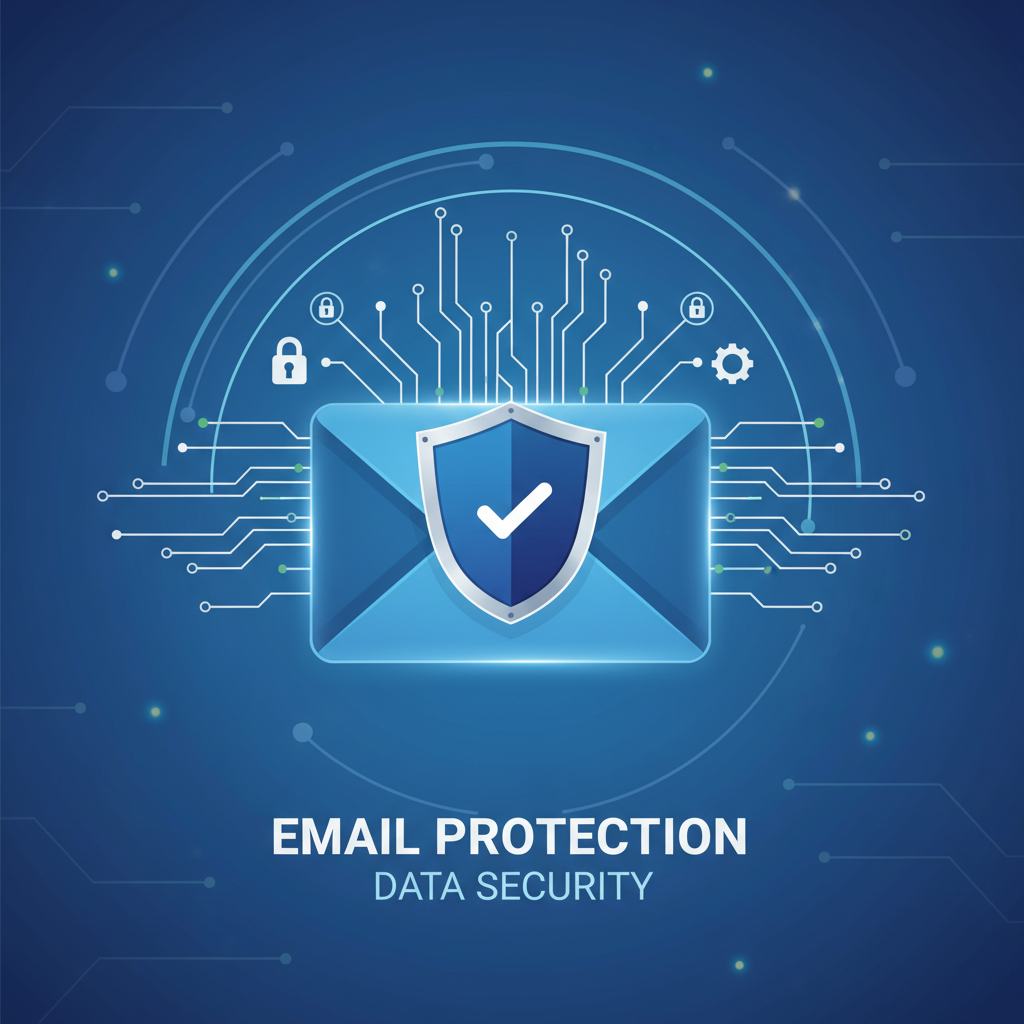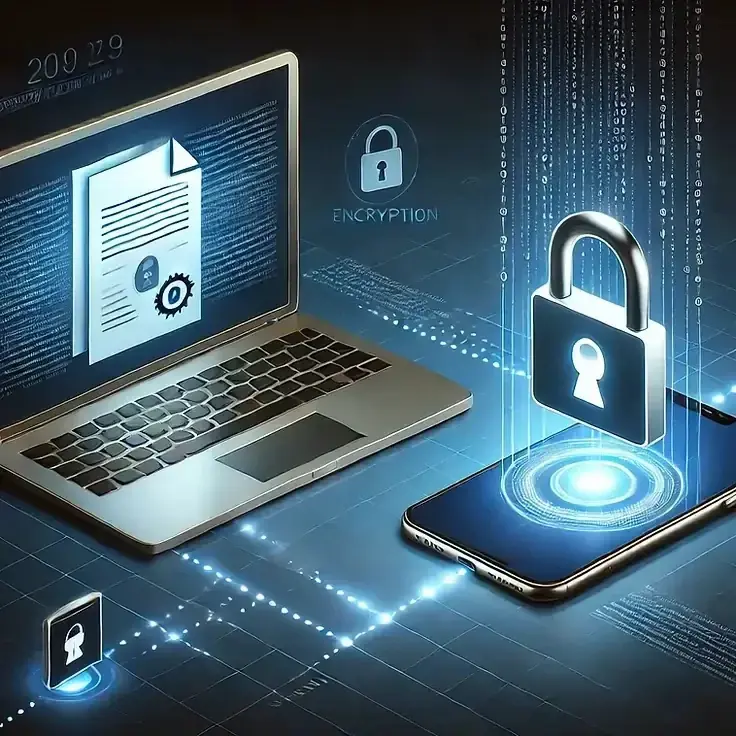Email is at the heart of modern business, enabling everything from routine status updates to high-stakes contract negotiations. It’s so ingrained in our daily workflows that we often send sensitive documents without questioning whether email is truly secure. But beneath the convenience lies a complex web of security vulnerabilities that can expose your most confidential information.
The Fundamental Limitations of Email Security
Email was designed in the 1970s for academic communication, long before cybersecurity became critical. Despite decades of security additions, fundamental vulnerabilities remain:
1. Email Travels Through Multiple Servers
Every email passes through numerous points where it can be accessed:
- Your email client (Outlook, Gmail, etc.)
- Your organization’s email server
- Potentially multiple relay servers
- The recipient’s email server
- The recipient’s email client
At each point, emails may be:
- Stored indefinitely
- Backed up to multiple locations
- Accessible by administrators
- Subject to legal holds and discovery
- Vulnerable to server breaches
2. Transport Encryption Isn’t End-to-End Encryption
TLS (Transport Layer Security) protects email in transit between servers, but:
- Messages are decrypted and re-encrypted at each hop
- Email providers can read your messages
- Governments can compel providers to share content
- Breaches expose stored messages in plaintext
- Cloud providers scan content for various purposes
3. Attachments Are Particularly Vulnerable
Document attachments face additional risks:
- Often stored separately from messages
- May bypass security scanning
- Downloaded to multiple devices and locations
- Cached by email clients and browsers
- Included in system backups
- Synced to cloud storage automatically
Specific Risks of Emailing Sensitive Documents
Financial Documents
Sending financial information via email exposes:
- Bank statements and account numbers
- Tax returns with Social Security numbers
- Investment portfolios and trading details
- Credit card and payment information
- Merger and acquisition documents
Risk: Financial fraud, identity theft, insider trading, business espionage
Healthcare Records
Medical information sent via email violates:
- HIPAA privacy and security rules
- Patient confidentiality requirements
- State medical privacy laws
- International data protection regulations
Risk: Regulatory fines, lawsuits, privacy violations, discrimination
Legal Documents
Attorney-client communications face:
- Potential waiver of privilege
- Disclosure of litigation strategy
- Exposure of confidential settlements
- Compromise of client information
Risk: Lost legal protections, malpractice claims, ethical violations
Intellectual Property
Trade secrets and IP transmitted via email risk:
- Industrial espionage
- Competitive intelligence gathering
- Patent disclosure problems
- Copyright infringement claims
- Lost competitive advantage
Risk: Business loss, legal disputes, market disadvantage
Emailing PII creates liability for:
- Data breach notification requirements
- GDPR violations (up to 4% global revenue)
- State privacy law violations
- Class action lawsuits
- Reputational damage
Risk: Massive fines, legal costs, customer loss, brand damage
Common Email Security Myths
Myth 1: “My Email Provider is Secure”
Reality: Even major providers face regular breaches. Microsoft, Google, and Yahoo have all experienced security incidents exposing user data.
Myth 2: “Password-Protected PDFs Are Secure”
Reality: PDF passwords:
- Are often weak and easily cracked
- Must be shared via the same insecure email
- Don’t protect metadata
- Can be bypassed with readily available tools
Myth 3: “Internal Email is Safe”
Reality: Internal email systems are compromised regularly:
- Phishing attacks gain internal access
- Malicious insiders have full access
- Email servers are prime ransomware targets
- Business email compromise is increasingly common
Myth 4: “Deleting Email Removes it Completely”
Reality: Deleted emails:
- Remain on backup systems for years
- May be recovered from servers and devices
- Are subject to legal discovery
- May be retained by recipients indefinitely
Real-World Consequences
Case Study: Healthcare Provider HIPAA Violation
A medical clinic emailed patient records to an incorrect address. Result:
- $100,000 HIPAA fine
- Required security audit (additional $50,000)
- Mandatory patient notification
- Reputation damage and patient loss
Case Study: Law Firm Data Breach
Hackers accessed a law firm’s email server containing client documents. Result:
- Malpractice claims from multiple clients
- Loss of attorney-client privilege in ongoing cases
- $2 million settlement
- Firm dissolved within 18 months
Case Study: M&A Leak
Confidential merger documents sent via email were leaked to competitors. Result:
- Deal terms renegotiated (costing $50 million)
- SEC investigation
- Executive terminations
- Multi-year litigation
Secure Alternatives to Email for Document Sharing
1. Encrypted File Transfer Services
Enterprise solutions provide:
- True end-to-end encryption
- Access controls and expiration dates
- Audit trails and compliance reporting
- No local storage on servers
- Secure credential management
Purpose-built platforms offer:
- Document-level permissions
- Version control and tracking
- Integrated approval workflows
- Watermarking and download prevention
- DRM (Digital Rights Management)
3. Virtual Data Rooms (VDRs)
For high-value transactions:
- Bank-grade security
- Detailed access logging
- Q&A capabilities
- Redaction tools
- ISO 27001 certification
4. Enterprise Secure Messaging
Solutions like Cellcrypt provide:
- Military-grade end-to-end encryption
- Post-quantum cryptography
- Integrated file sharing
- Enterprise controls
- Compliance features
Cellcrypt: The Secure Alternative to Email
For organizations that need to share sensitive documents securely, Cellcrypt provides comprehensive protection that email simply cannot match:
Security Advantages Over Email
| Feature | Email | Cellcrypt |
|---|
| End-to-End Encryption | ❌ | ✅ |
| Post-Quantum Protection | ❌ | ✅ |
| Zero-Knowledge Architecture | ❌ | ✅ |
| Provider Cannot Access Content | ❌ | ✅ |
| True Message Deletion | ❌ | ✅ |
| Forward Secrecy | ❌ | ✅ |
Enterprise Features
- Centralized Administration: Manage users, policies, and access
- Audit Trails: Complete logs for compliance and legal purposes
- Policy Enforcement: Prevent unauthorized sharing
- Data Loss Prevention: Automatic scanning and blocking
- Retention Controls: Enforce document lifecycle policies
- Mobile Security: Secure access from any device
Compliance Support
Cellcrypt helps meet requirements for:
- HIPAA: Healthcare privacy and security rules
- GDPR: European data protection regulation
- SOX: Financial reporting and controls
- PCI DSS: Payment card industry standards
- ITAR: Defense trade regulations
- FedRAMP: Government cloud security
Deployment Options
Choose the model that fits your security requirements:
- Cloud Deployment: Quick setup, managed infrastructure
- On-Premises: Complete control over data and keys
- Hybrid: Balance convenience with sovereignty
- Air-Gapped: Maximum security for classified environments
Best Practices When You Must Use Email
If email is unavoidable, follow these best practices:
1. Use Email Encryption
Implement:
- S/MIME with strong certificate management
- PGP/GPG for peer-to-peer encryption
- Gateway encryption for organization-wide protection
2. Minimize Sensitive Content
Instead of attaching documents:
- Send secure download links
- Use password-protected containers
- Split sensitive data across channels
- Reference documents stored in secure systems
3. Implement Technical Controls
Deploy:
- Data Loss Prevention (DLP) systems
- Email filtering and scanning
- Advanced Threat Protection (ATP)
- Email authentication (SPF, DKIM, DMARC)
4. Train Employees
Ensure staff understand:
- What constitutes sensitive information
- Approved channels for different data types
- How to recognize phishing and BEC attacks
- Incident reporting procedures
When to Move Beyond Email
Your organization should implement alternative document sharing if:
- You handle regulated data (healthcare, financial, legal)
- Compliance requires audit trails and access controls
- Documents contain trade secrets or competitive information
- You’ve experienced email-related security incidents
- Partners or clients require higher security
- Industry standards mandate encryption
- You want to reduce insurance premiums and liability
Conclusion
Email remains essential for business communication, but it was never designed for secure document sharing. The risks of using email for sensitive documents are real, significant, and growing as attackers become more sophisticated and regulations more stringent.
Organizations that continue to rely on email for sensitive document sharing face:
- Inevitable security breaches
- Regulatory violations and fines
- Legal liability and lawsuits
- Competitive disadvantage
- Reputation damage
The solution isn’t to eliminate email, but to recognize its limitations and deploy appropriate secure alternatives for sensitive communications. Cellcrypt provides the enterprise-grade security, compliance features, and administrative controls that email simply cannot deliver.
Don’t wait for a breach, regulatory fine, or lawsuit to force the change. Implement secure document sharing now and protect your organization’s most valuable information.
Get Started with Cellcrypt | Learn About Secure File Transfer



